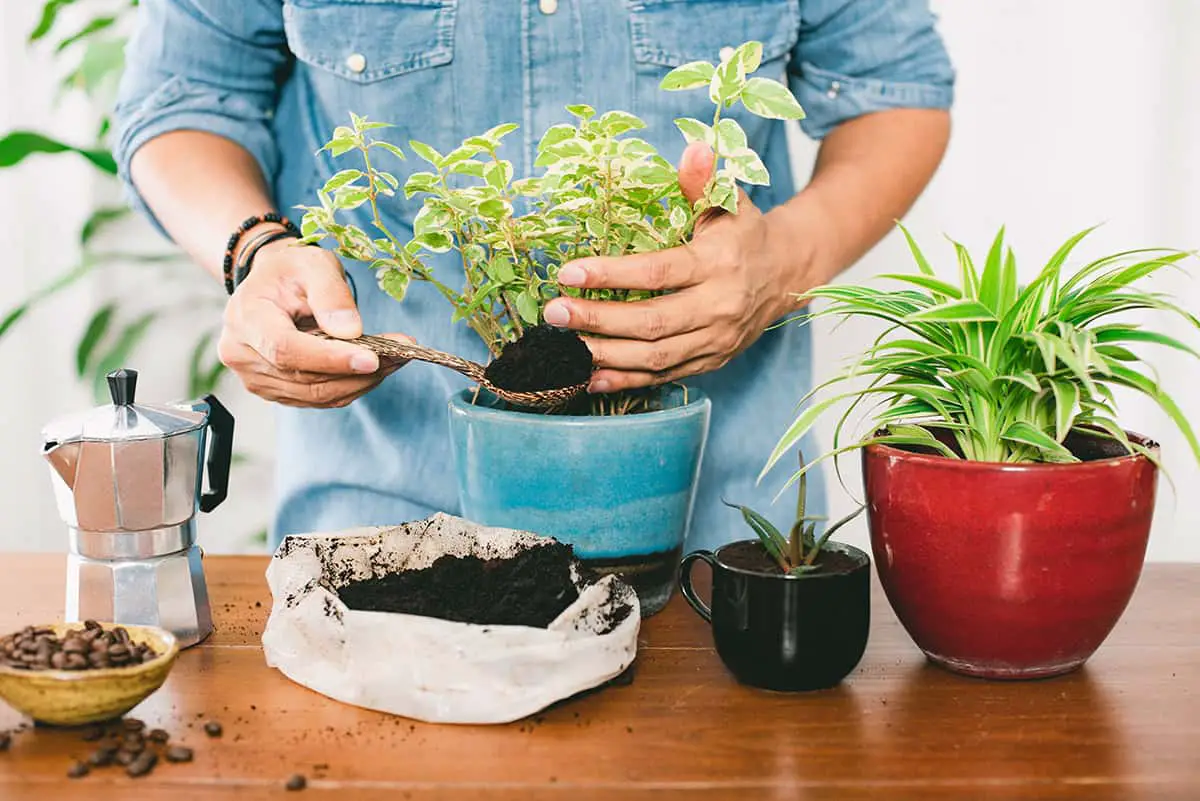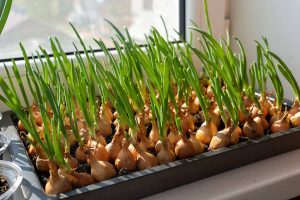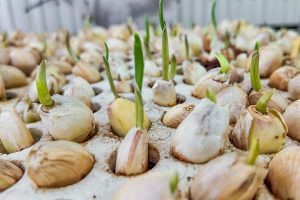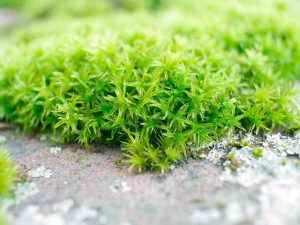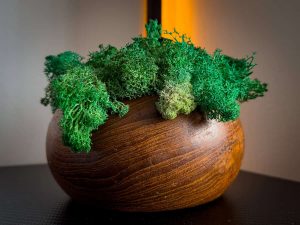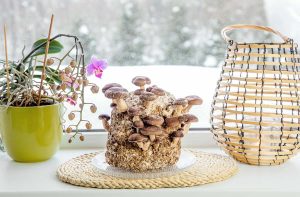You finish your morning coffee and look at the leftover grounds, wondering if they could be put to better use. Instead of throwing them away, you can use coffee grounds to benefit your houseplants. They can enrich the soil and provide essential nutrients. Here’s how to use coffee grounds for houseplants effectively.
Table of Contents
Benefits of Using Coffee Grounds for Houseplants
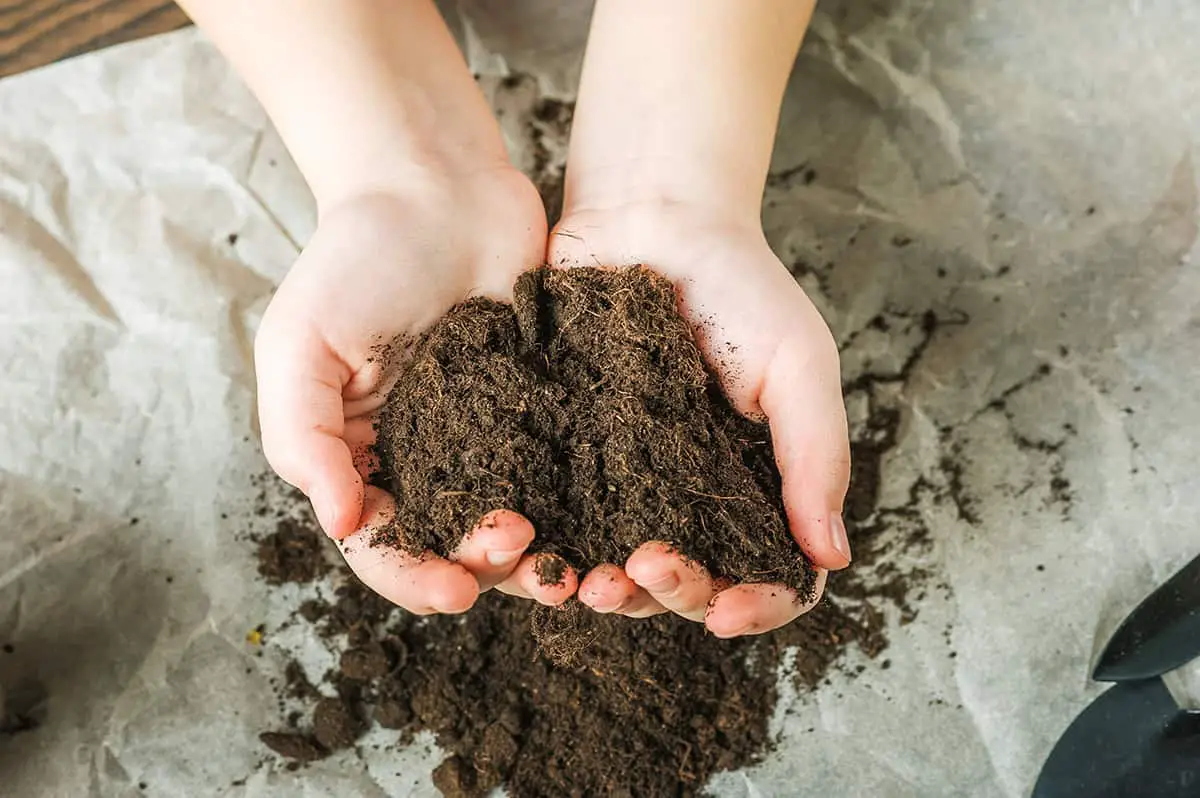
Nutrient-Rich Soil Amendment
Coffee grounds can be a great addition to your houseplant soil since they are rich in nutrients. They contain essential elements like nitrogen, phosphorus, and potassium. Used coffee grounds also provide organic material that helps improve soil structure and drainage. To use coffee grounds as a soil amendment, simply mix them into the potting mix at a ratio of up to 20% of the total volume.
Natural Pest Repellent
Another benefit of using coffee grounds for houseplants is their ability to repel pests. The strong aroma of coffee can provide a natural deterrent to insects like ants, aphids, and slugs. Sprinkling coffee grounds around the base of your plants creates a barrier that can keep these pests at bay. Moreover, coffee grounds are a safer, eco-friendly alternative to chemical pesticides, and they won’t harm your plants when used correctly.
Fungal Disease Suppression
In addition to improving soil quality and repelling pests, coffee grounds may play a role in suppressing fungal diseases. It has been found that natural compounds in coffee grounds can inhibit the growth of certain fungal pathogens, protecting your plants from diseases like damping-off and root rot. To use this benefit, lightly spread a thin layer of used coffee grounds around the plant’s base to create a protective barrier.
When To Use Coffee Grounds For Indoor Plants
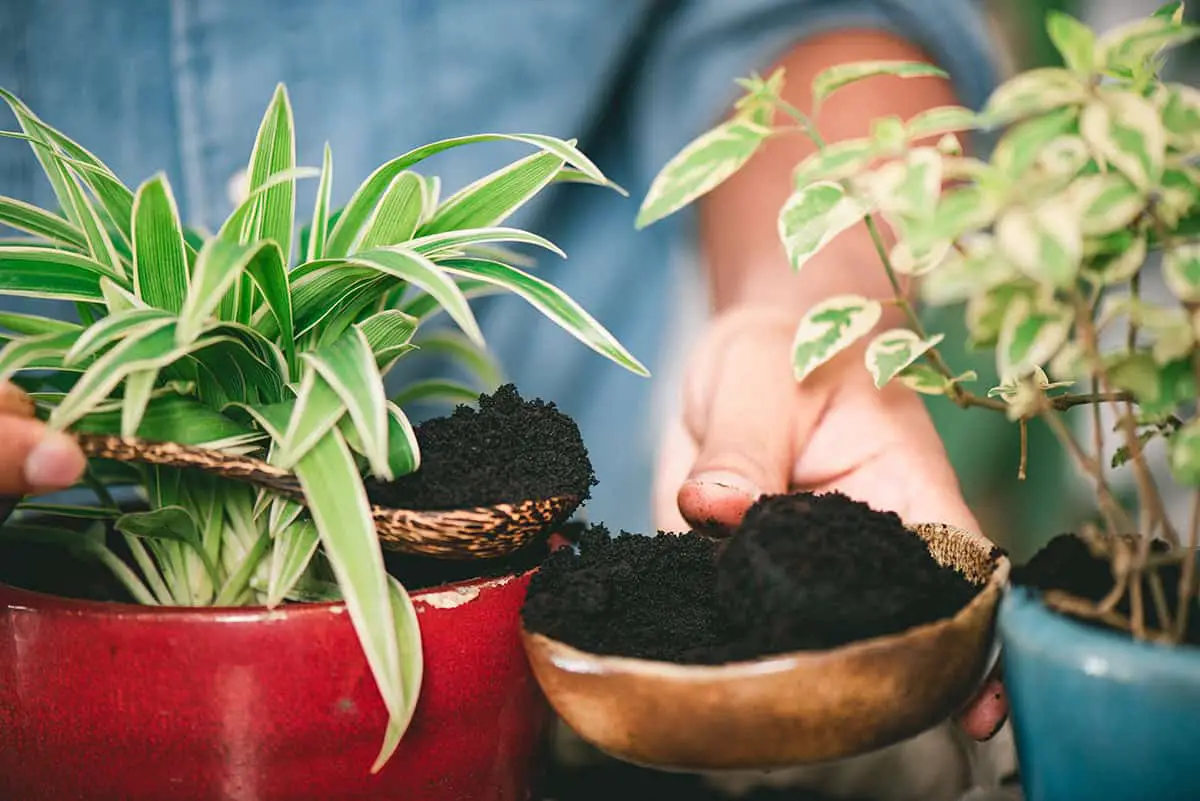
It’s important to know when to use coffee grounds for your indoor plants. Begin by understanding the need for additional nutrients in your plant’s potting soil. If you notice slow growth, yellowing leaves, or other signs of nutrient deficiency, it could be time to consider coffee grounds as a supplement.
Coffee grounds are rich in nitrogen, which makes them a beneficial addition to your indoor plant’s soil. But remember, moderation is key. When and how you apply the coffee grounds depends on your plant’s specific needs.
For plants with a high nitrogen requirement, mix the grounds into the soil or sprinkle them on top. But avoid applying them too often, as excessive use can lead to compacted, poorly aerated soil. The University of Arizona recommends using no more than half an inch layer of grounds at a time.
A great time to use coffee grounds is during the active growing season. This generally occurs between spring and fall for most indoor plants. In the dormant winter months, hold off on using coffee grounds as your plants’ nutrient demands are lower during this time.
Lastly, recognize that not all indoor plants are suited for coffee grounds. Plants that prefer alkaline soil may suffer from the additional acidity introduced by coffee grounds. Research your plant’s specific preferences and adjust your usage accordingly.
Preparing Coffee Grounds for Use
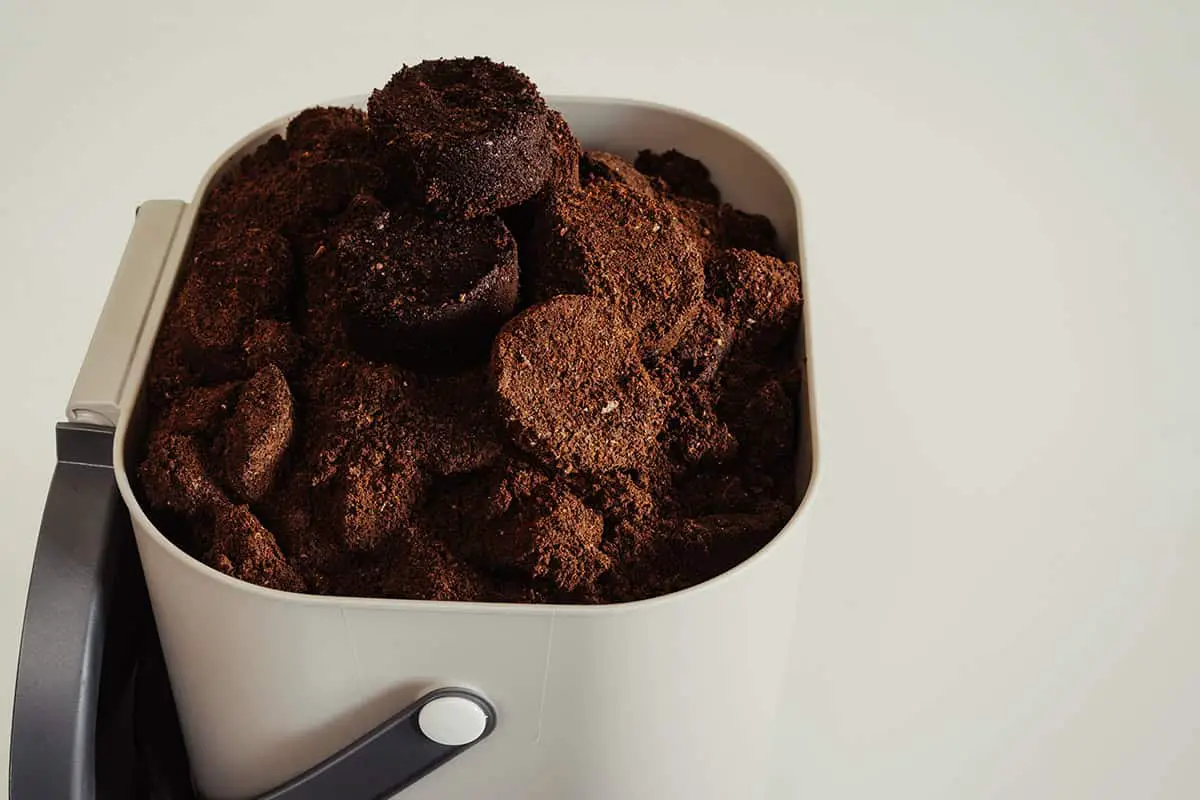
Drying and Storing
To prepare coffee grounds for your houseplants, start by drying them out. Spread the used grounds on a flat surface, like a baking tray or newspaper, and let them air dry for a day or two. Once the grounds are dry, store them in an airtight container until you’re ready to use them. Drying and proper storage prevent mold growth and ensure that the nutrients in the coffee grounds remain intact for your plants.
Methods of Application
There are several ways to use coffee grounds for your houseplants.
- Direct application: Sprinkle dry coffee grounds around the base of your plants. This method allows the grounds to gradually break down and release nutrients, such as nitrogen, into the surrounding soil. Be cautious not to overuse as too much can harm your plants. A thin layer is sufficient.
- Coffee ground tea: Create a nutrient-rich liquid by steeping dry coffee grounds in water for a few hours or overnight. Strain the liquid and use it to water your plants. This approach provides a quick release of nutrients, especially beneficial for plants in need of a pick-me-up.
- Incorporate into the potting mix: Mix coffee grounds into your potting soil, using up to 20% of the total compost volume for the best results. This method slowly releases nutrients and can help improve soil structure.
Remember that moderation is key when using coffee grounds for houseplants. Although they provide valuable nutrients, overuse can be detrimental to your plant’s health. Always monitor your plants for any signs of stress and adjust your application of coffee grounds accordingly.
How to Apply Coffee Grounds to Soil
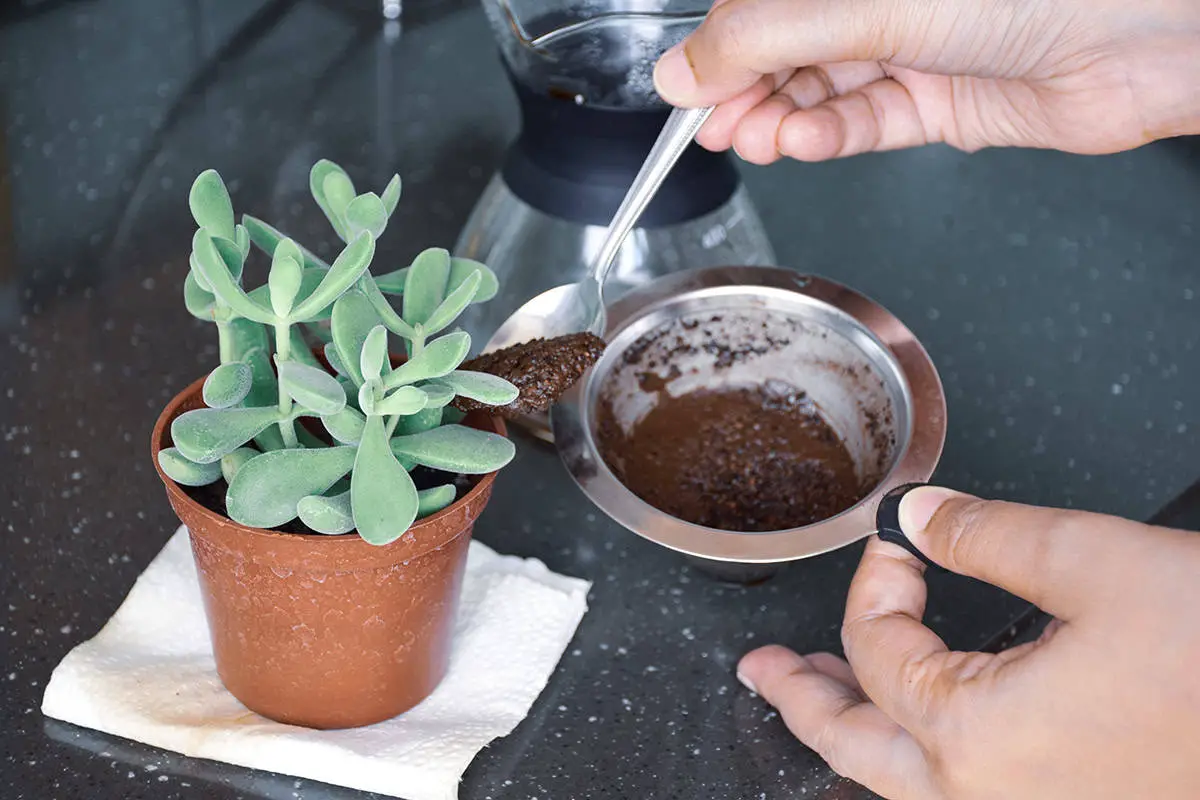
Direct Incorporation
Incorporating coffee grounds directly into your houseplant’s soil is an easy way to improve its health. To do this, you’ll first need to collect used coffee grounds and let them dry thoroughly. Once they’re dry, simply sprinkle a thin layer, about half an inch, around the base of your plants. Make sure to avoid over-applying the coffee grounds, as this may cause excessive nitrogen release, which can damage your plants.
University of Connecticut’s Extension has shown that coffee grounds can provide vital nutrients like nitrogen, phosphorus, and potassium to your plants when used correctly.
Making a Coffee Ground Tea
Another method for using coffee grounds in your houseplants is to create a coffee ground tea. This liquid fertilizer offers a gentle solution that is easily absorbed by your plants. To make this tea, mix one-part used coffee grounds with four parts water. Let the mixture sit for a day or two, and then strain out the grounds.
Use the resulting liquid to water your plants as needed. This will provide them with a boost of essential nutrients, as mentioned in this Oregon State University Extension article.
Important Considerations When Using Coffee Grounds
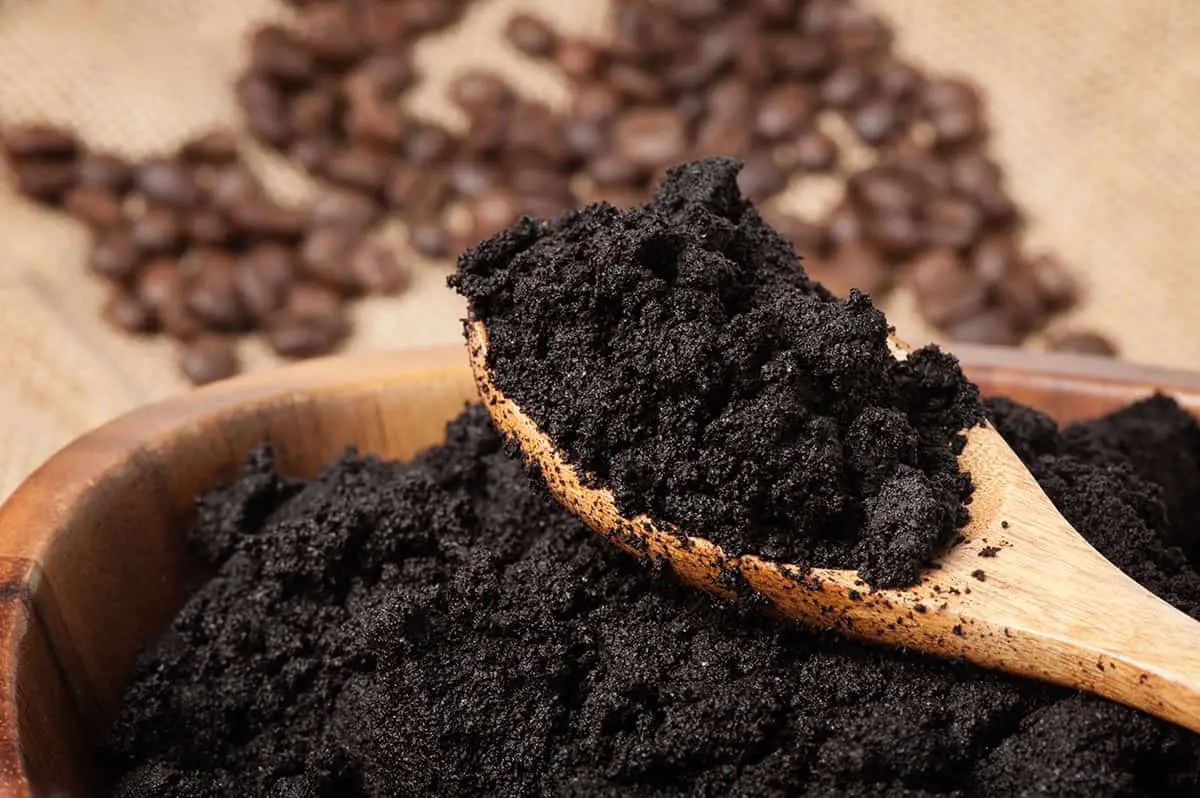
Acidity Levels
When using coffee grounds for houseplants, it’s essential to consider the acidity levels. Coffee grounds can be mildly acidic, with a pH range of 4.6 to 6.5 as they decompose according to this research. However, the pH can change over time. Make sure to test the pH of your coffee grounds before applying them to your houseplants, as different plants have varying tolerance levels for acidity.
Potential Toxins
While coffee grounds contain nutrients beneficial for your houseplants, they might also introduce some toxins. The University of Arizona mentions that in compost, you should limit the coffee ground content to no more than 20% of the total compost volume, as 30% has often been detrimental. Excessive amounts of coffee grounds can negatively affect germination and inhibit growth. Therefore, monitor your use of coffee grounds in your plants’ soil to avoid potential harm.
Usage Frequency
Finding the right balance in how often you use coffee grounds is critical for your houseplants’ health. Overusing coffee grounds on houseplants can cause problems like water repellency and hinder growth due to their toxin content.
Oregon State University Extension recommends working a half-inch layer of coffee grounds into the soil to a depth of 4 inches or using a 3:1 ratio of leaves to coffee grounds in your compost. This allows you to provide the nutrients your houseplants need without overdoing it, ensuring optimal growth and vitality.
Common Houseplants That Thrive on Coffee Grounds
African Violets
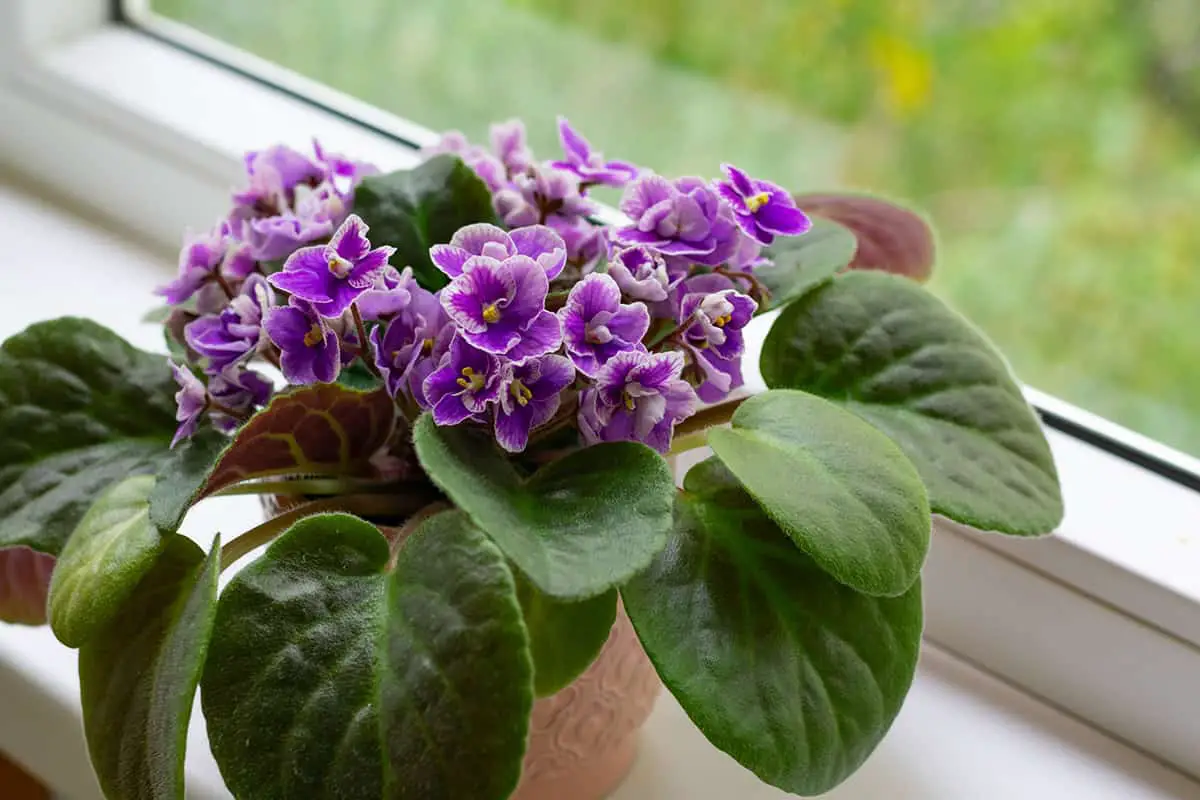
Adding used coffee grounds to the soil of your African Violets can provide them with essential nutrients. Coffee grounds are rich in nitrogen, making them an excellent source of fertilizer for these delicate plants.
Mix the used grounds into the top layer of the soil, ensuring you do not exceed a 20% coffee-to-soil ratio for best results. This should ensure that the African Violet roots have access to nutrients without any risk of damage.
Jade Plants
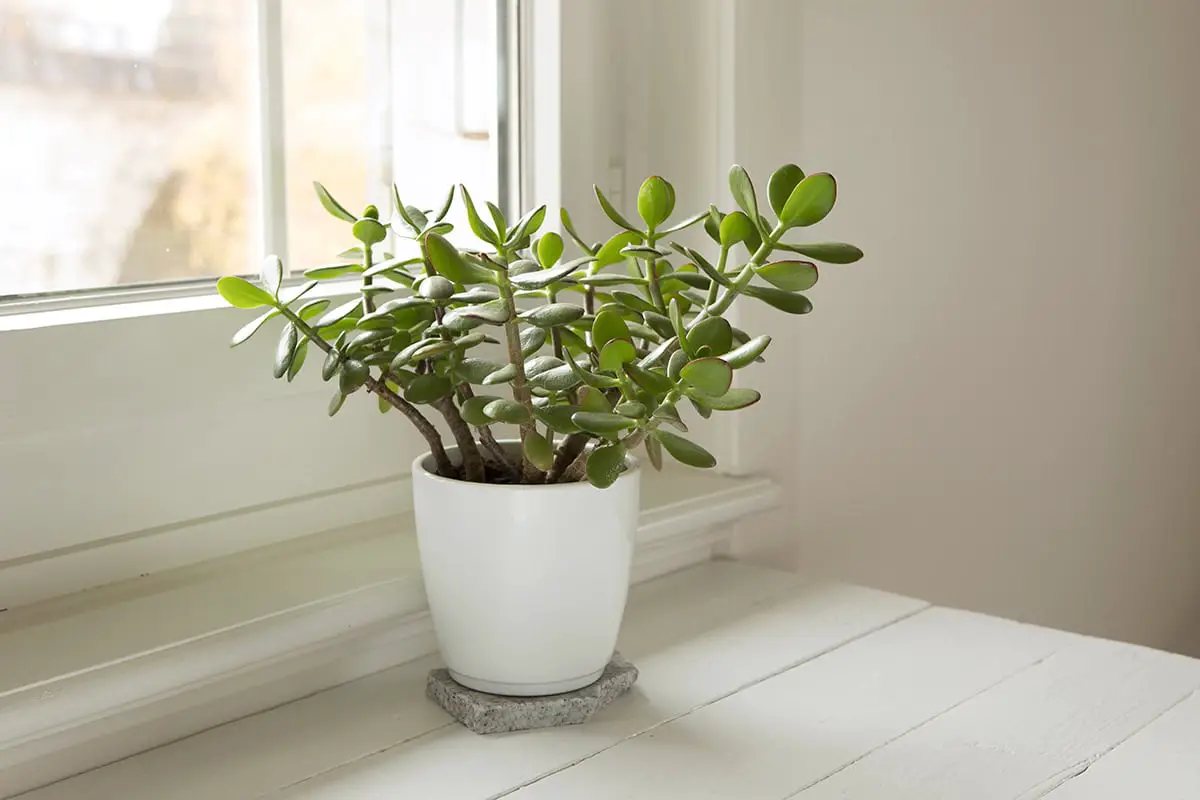
Jade plants, also known as Crassula ovata, can also benefit from the addition of coffee grounds to their soil. The nitrogen in the coffee grounds can help enhance the plant’s growth and leaf development.
It’s important to note, however, that coffee grounds should not be used as a standalone fertilizer for Jade plants. Mix the coffee grounds into the soil at a rate of no more than 20% to maintain a healthy balance for your plants.
Snake Plants
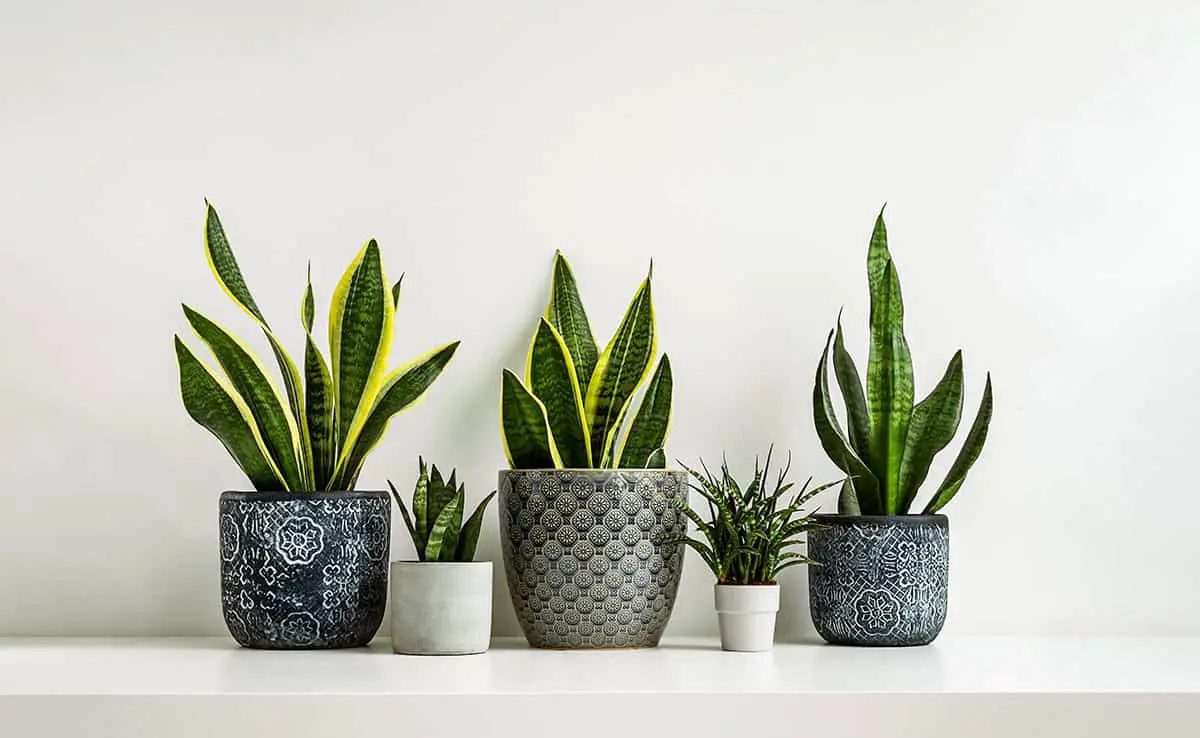
Snake plants, or Sansevieria, are known for their hardy nature and low maintenance requirements. They can also reap the benefits of used coffee grounds when added to their soil.
The added nitrogen promotes their healthy growth. As with other houseplants, it’s crucial not to overdo it with coffee grounds. A 20% mixture of coffee grounds in the soil is a safe and effective ratio for snake plants. Remember that moderation is key when using coffee grounds for your plants.
Troubleshooting Common Issues
Overfertilization Symptoms
When using coffee grounds for your houseplants, you should be cautious about overfertilizing. Excessive amounts may lead to symptoms such as leaf burn, discoloration, and wilted plants.
To prevent these issues, practice moderation when applying coffee grounds and observe your plants for any signs of stress. If you notice overfertilization symptoms, reduce the quantity and frequency of coffee ground applications to avoid further damage.
Mold Growth Prevention
Using coffee grounds on houseplants can sometimes lead to mold growth due to the moisture they retain. To prevent mold, maintain a thin layer of coffee grounds and mix them with a drier material like coarse organic mulch. This approach helps control moisture levels and keeps your plants healthy. Additionally, maintain proper airflow around your plants and remove any visible mold as soon as it appears.
Correcting pH Imbalances
Using coffee grounds might slightly affect your plant’s soil pH. If you suspect a pH imbalance, you can conduct a soil test to determine the exact levels. If the pH is too acidic, you can remedy the situation by adding a little lime.
Conversely, if the pH is too alkaline, you can use sulfur or acidic organic materials to balance it out. While managing coffee ground applications, keep an eye on your houseplants to ensure they thrive in the proper pH range.
